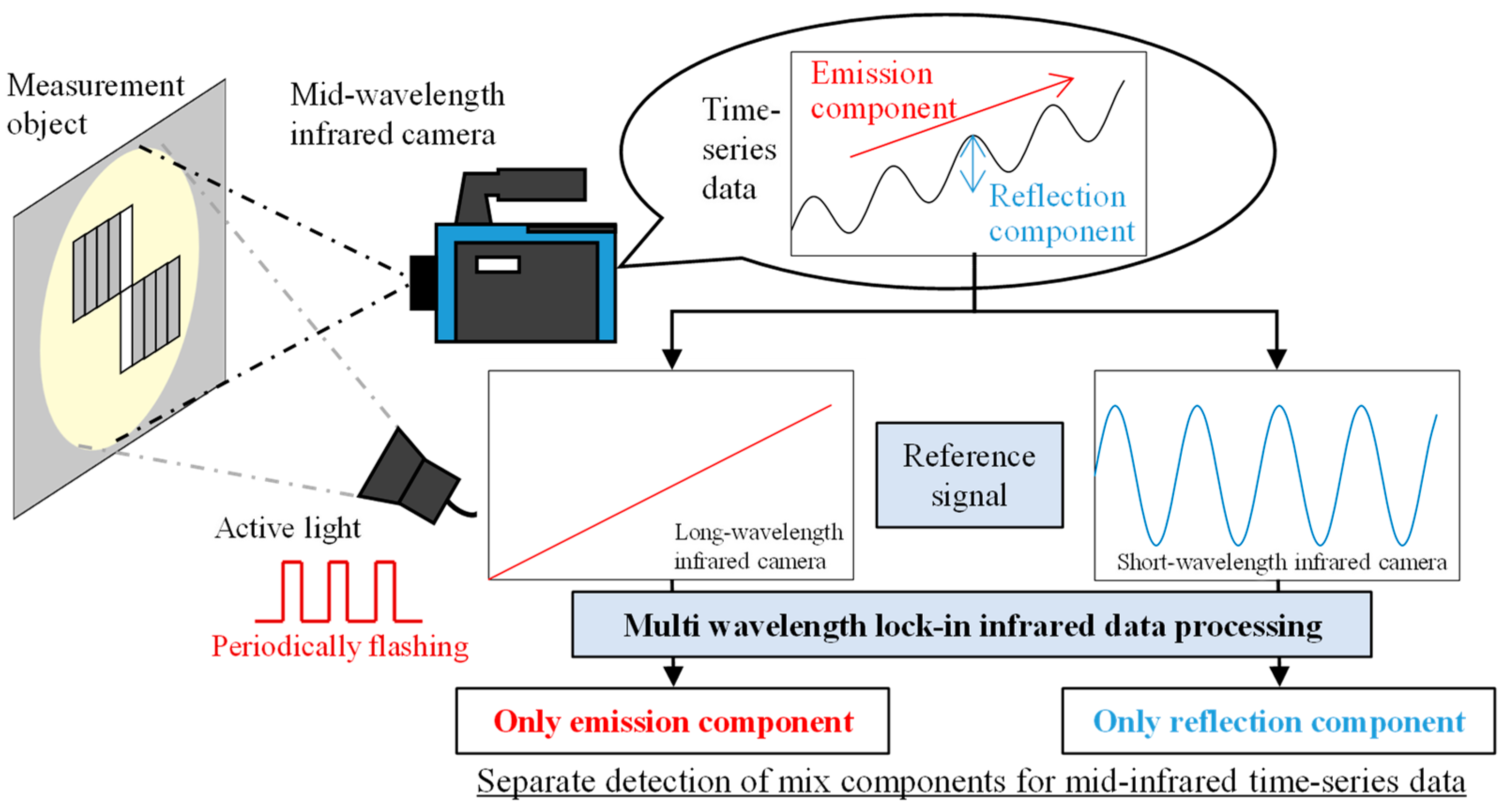Improvement of Anticorrosion Coating Thickness Measurement Using Multi-Wavelength Lock-In Infrared Data Processing †
Abstract
:1. Introduction
2. Principle of Quantitative Nondestructive Evaluation for the Thickness of Coatings by Multi-Wavelength Lock-In Infrared Data Processing
3. Experimental Method
4. Result and Discussion
5. Conclusions
Author Contributions
Funding
Institutional Review Board Statement
Informed Consent Statement
Data Availability Statement
Conflicts of Interest
References
- Kishigami, S.; Mizokami, Y.; Sakata, T.; Ogawa, Y.; Shiozawa, D.; Sakagami, T. Detection of heavy-duty anticorrosion coating deterioration using near-infrared spectral characteristics. NDT E Int. 2022, 132, 102708. [Google Scholar] [CrossRef]
- Sakata, T.; Kishigami, S.; Ogawa, Y.; Arima, N.; Nishitani, M.; Shiozawa, D.; Sakagami, T. Quantitative assessment of heavy-duty anticorrosion coating thickness via near-infrared measurements. NDT E Int. 2023, 138, 102893. [Google Scholar] [CrossRef]





Disclaimer/Publisher’s Note: The statements, opinions and data contained in all publications are solely those of the individual author(s) and contributor(s) and not of MDPI and/or the editor(s). MDPI and/or the editor(s) disclaim responsibility for any injury to people or property resulting from any ideas, methods, instructions or products referred to in the content. |
© 2023 by the authors. Licensee MDPI, Basel, Switzerland. This article is an open access article distributed under the terms and conditions of the Creative Commons Attribution (CC BY) license (https://creativecommons.org/licenses/by/4.0/).
Share and Cite
Morimoto, T.; Ogawa, Y.; Sakata, T.; Shiozawa, D.; Sakagami, T. Improvement of Anticorrosion Coating Thickness Measurement Using Multi-Wavelength Lock-In Infrared Data Processing. Eng. Proc. 2023, 51, 11. https://doi.org/10.3390/engproc2023051011
Morimoto T, Ogawa Y, Sakata T, Shiozawa D, Sakagami T. Improvement of Anticorrosion Coating Thickness Measurement Using Multi-Wavelength Lock-In Infrared Data Processing. Engineering Proceedings. 2023; 51(1):11. https://doi.org/10.3390/engproc2023051011
Chicago/Turabian StyleMorimoto, Tatsuhito, Yuki Ogawa, Takumi Sakata, Daiki Shiozawa, and Takahide Sakagami. 2023. "Improvement of Anticorrosion Coating Thickness Measurement Using Multi-Wavelength Lock-In Infrared Data Processing" Engineering Proceedings 51, no. 1: 11. https://doi.org/10.3390/engproc2023051011





